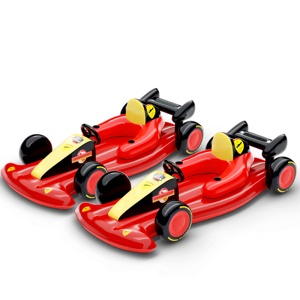
All categories
Featured selections
Trade Assurance
Buyer Central
Help Center
Get the app
Become a supplier

(17374 products available)













































In the context of large floats, the term "large float" typically refers to large buoyancy devices used in various applications, such as water sports, construction, environmental monitoring, and recreational activities. These large floats provide buoyancy and stability in water and can support significant weights. Depending on the specific application and requirements, large floats come in different types and materials.
Large floats are typically classified into three main categories:
Large floats are versatile tools that are utilized in an extensive array of applications and industries. Here are some of the key usage scenarios:
Agriculture
Large floats are extensively utilized in agriculture for irrigation management. They help regulate water levels in canals and ponds, ensuring consistent and stable supplies for crop irrigation. Additionally, large floats monitor and control water levels in agricultural drainage systems, preventing waterlogging and promoting efficient drainage. They are also used in aquaculture farms to maintain water levels in fish ponds, ensuring optimal conditions for fish farming.
Construction
Large floats are used in construction for concrete pouring and leveling. They help maintain the water levels on site, preventing flooding and ensuring a stable working environment. Large floats monitor water levels in construction ponds, which are used for various purposes, including sediment control and temporary water storage.
Recreation and Entertainment
Large floats are widely used in recreational and entertainment activities. They provide a stable and safe floating platform for events like water yoga, fishing, and family gatherings on the water. Large floats are also used as floating stages for concerts and events held on lakes or rivers, providing a unique experience for attendees.
Environmental Applications
Large floats are used in environmental applications for monitoring and managing water quality in lakes, rivers, and reservoirs. They help maintain water levels in wetlands and natural water bodies, supporting the ecological balance and habitat preservation. Additionally, large floats are utilized in pollution control measures, such as intercepting debris and pollutants in water bodies before they reach the shore.
Large float selection depends on several important factors. Here are some of them:
Purpose and Type
Buyers should first consider what large float they need depending on the purpose. Is it for recreational activities, large-scale aquaculture, or industrial applications? For instance, if the float is for recreational use, large foam floats for swimming might be the most ideal option. Conversely, large cylindrical floats are better suited for aquaculture or marine infrastructure.
Material
As discussed earlier, each float material has its advantages. For example, Materials such as polyethylene are known for their durability and resistance to UV rays and chemicals. On the other hand, EPS foam is lightweight but more susceptible to environmental degradation. Buyers should consider the specific requirements of their use to select the most suitable material.
Size and Buoyancy
Large float sizes and buoyancy should be proportional to the intended use. Larger loads or more extensive structures will obviously require larger floats with higher buoyancy. Manufacturers can determine the necessary buoyancy by calculating the total weight to be supported and factoring in variables like wind and wave action.
Durability and Maintenance
Large floats need to withstand the elements, especially when used in outdoor settings. Therefore, it is necessary to select a float that is durable and requires minimal maintenance to ensure longevity and reduce long-term costs. Regular inspections should also be conducted to identify any signs of wear or damage early enough.
Compatibility and Integration
Buyers should ensure that the large float is compatible with existing equipment or systems. For instance, large dock floats should be compatible with standard docking hardware. Large floats for aquaculture should work well with netting and other infrastructure components.
Q1: What are the different kinds of large floats?
A1: There are numerous kinds of large floats, such as large foam floats, large PVC floats, and large polyethylene floats. Large foam floats are fabricated from closed-cell foam and are known for their durability and low maintenance requirements. Large PVC floats are fabricated from reinforced PVC and are lightweight, economical, and easily customizable. Large polyethylene floats are fabricated from HDPE and are UV-resistant and suitable for outdoor applications.
Q2: What is the lifespan of large floats?
A2: The lifespan of large floats largely depends on the materials and maintenance. Large foam floats can last for around 20 years. Large polyurethane floats have a lifespan of about 10 years. Large PVC floats typically last for 5 to 10 years.
Q3: Are large floats customizable?
A3: Yes, large buoy floats can be customized in sizes, colors, and shapes to meet specific requirements. Large foam floats can also be customized in different functional attributes, such as providing additional insulation or specific load-bearing capacities.
Q4: What is the maintenance of large floats?
A4: Large floats require minimal maintenance. Large polyethylene floats can be cleaned with soap and water to remove dirt and algae. Large foam and PVC floats should be inspected for any signs of wear, tear, or damage and repaired or replaced as needed.
Q5: How are large floats installed?
A5: Large floats are simple and easy to install. An appropriate-sized and -shaped large float is positioned in the desired location, usually in water bodies like lakes, seas, or artificial ponds. The float is anchored or secured in place using ropes, chains, or other anchoring systems, which can be adjusted based on the float's intended use and the specific water conditions. Installation can vary slightly depending on the float's type and purpose, but generally, it is a straightforward process that requires minimal equipment and expertise.